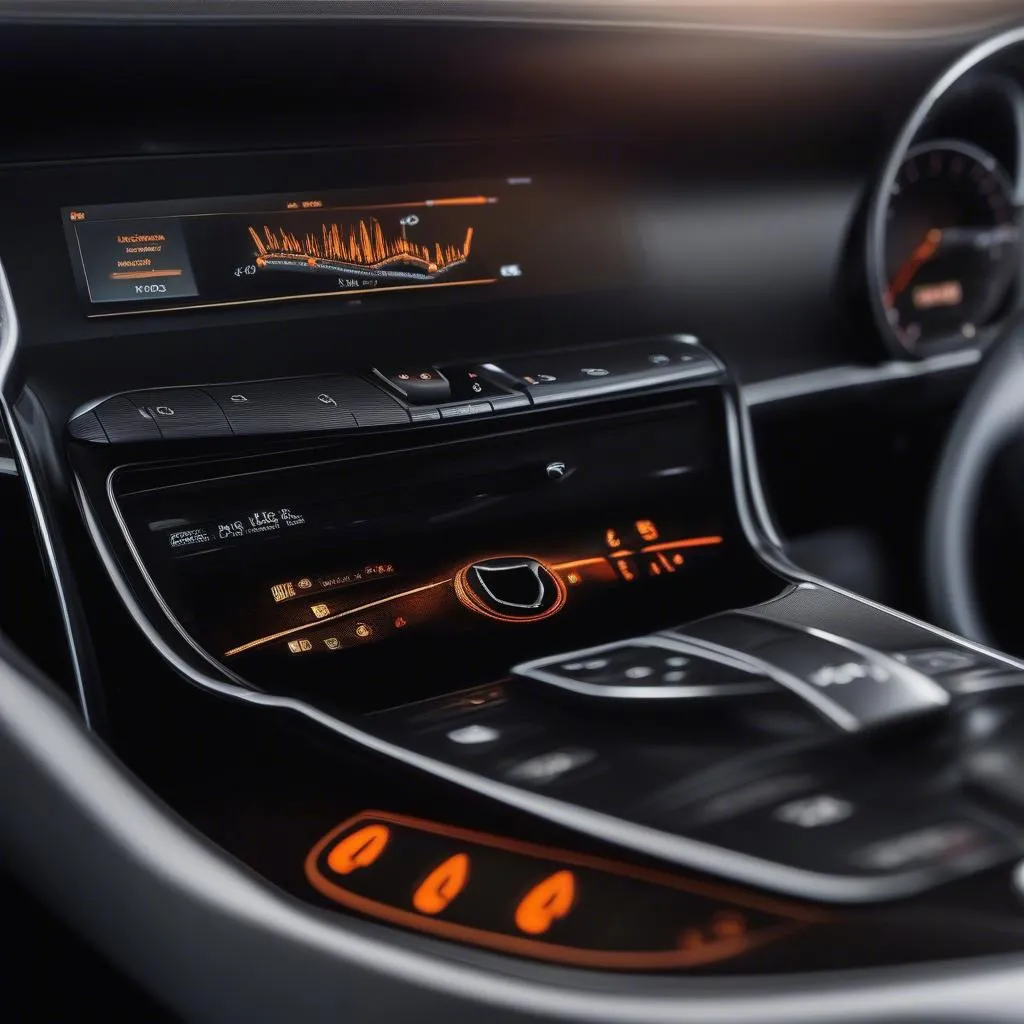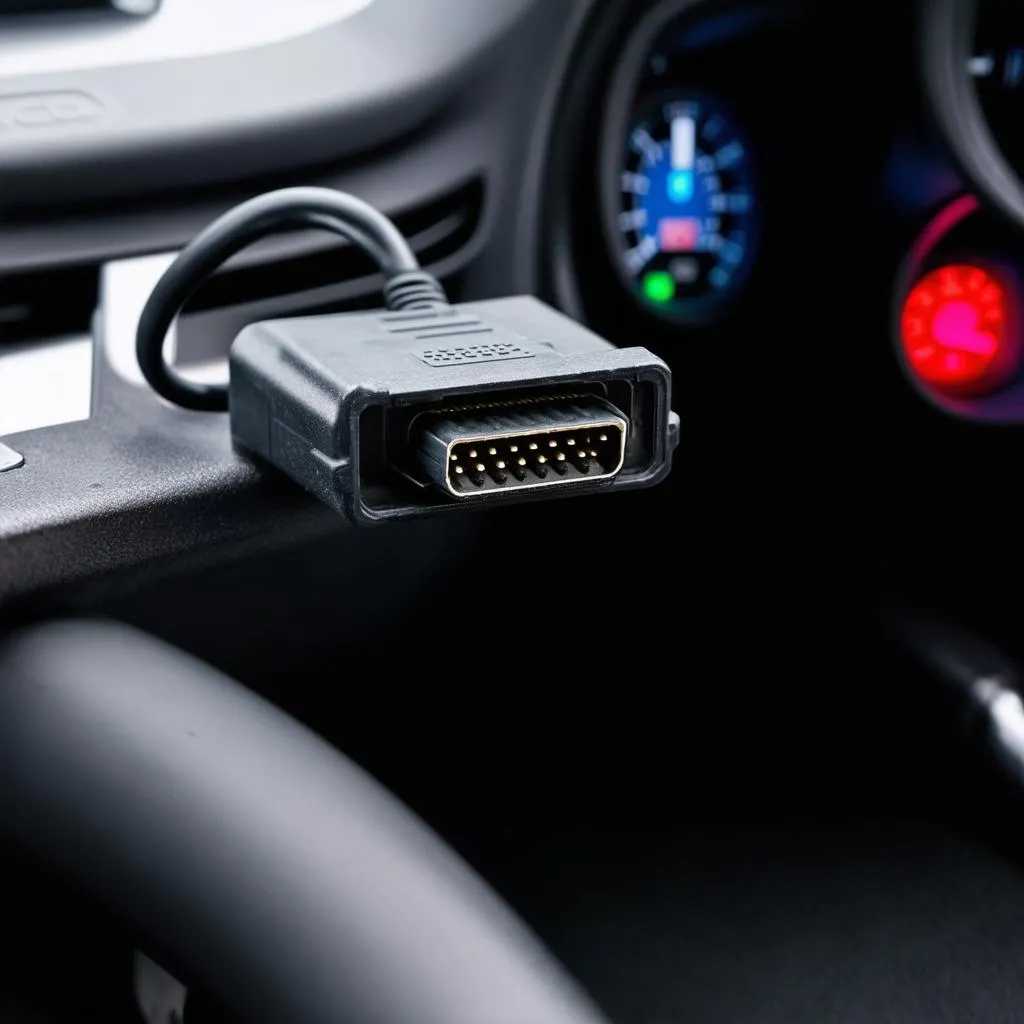Seeing the ESP and ABS lights illuminated on your Mercedes-Benz dashboard can be concerning. These lights are part of your vehicle’s safety systems, and when they’re on, it indicates a potential issue. But don’t worry! This guide will walk you through common causes and how to potentially fix the ESP ABS light on your Mercedes.
Understanding the ESP ABS System
Before diving into troubleshooting, let’s understand what these systems do:
- Electronic Stability Program (ESP): Helps maintain vehicle stability during cornering and slippery conditions by automatically applying brakes to individual wheels and adjusting engine power.
- Anti-lock Braking System (ABS): Prevents wheel lockup during hard braking, allowing you to maintain steering control.
These systems often work in tandem, sharing sensors and modules. When one system experiences an issue, it can trigger lights for both.
Common Causes of an ESP ABS Light
Here are some frequent culprits behind the ESP ABS light on your Mercedes:
- Faulty Wheel Speed Sensor: These sensors monitor the rotational speed of each wheel. A malfunctioning sensor can disrupt the ESP and ABS systems.
- Brake Light Switch Issue: A faulty brake light switch can confuse the ABS control module, leading to warning lights.
- Low Brake Fluid: Insufficient brake fluid can trigger both warning lights as it affects overall braking system pressure.
- Steering Angle Sensor Problem: This sensor relays information about your steering wheel position. If it malfunctions, it can disrupt stability control systems.
- ABS Control Module Fault: In some cases, the issue might lie with the ABS control module itself, requiring specialized diagnosis.
How to Identify the Problem
While this guide offers basic troubleshooting, remember that pinpointing the exact cause often requires a diagnostic scan tool, which can read fault codes stored in your Mercedes’ computer. Here’s a general approach:
- Check Warning Lights: Note if other warning lights are illuminated along with the ESP and ABS lights, as this can provide additional clues.
- Inspect Brake Fluid: Ensure the brake fluid level in the reservoir is within the minimum and maximum marks.
- Visual Inspection: Look for any visible damage to wiring harnesses near the wheels, particularly around the brake calipers (where the wheel speed sensors are located).
- Consult a Professional: If the issue persists or you’re uncomfortable working on your car’s braking system, it’s best to consult a qualified mechanic, especially one experienced with Mercedes vehicles.
 Mercedes ESP ABS warning lights
Mercedes ESP ABS warning lights
Fixing the ESP ABS Light
Disclaimer: Attempting repairs yourself can be dangerous if you’re not familiar with automotive systems. Proceed with caution or seek professional help.
-
Addressing Simple Fixes:
- If the brake fluid is low, top it off with the recommended type for your Mercedes model.
- Check your brake light functionality. If they’re not working, replacing the brake light switch is often a straightforward fix.
-
Using a Diagnostic Tool:
- Connect a compatible OBD-II scanner to your Mercedes’ diagnostic port (usually located under the dashboard on the driver’s side).
- Read the fault codes stored in the system. These codes provide specific insights into the problem area.
-
Sensor Replacement:
- If the diagnostic tool points to a faulty wheel speed sensor, replacing it is usually the solution.
- Locate the problematic sensor using the fault code information and consult your vehicle’s repair manual for replacement instructions.
-
Seeking Professional Assistance:
- Issues like a faulty ABS control module or complex wiring problems typically require specialized knowledge and tools.
- A qualified mechanic or a Mercedes dealership can accurately diagnose and repair these complex issues.
 Mercedes mechanic using diagnostic tool
Mercedes mechanic using diagnostic tool
FAQs
Q: Can I still drive my Mercedes with the ESP ABS light on?
A: While your car might still be drivable, the safety systems designed to assist in critical situations might be compromised. It’s crucial to address the issue as soon as possible.
Q: Are there any reliable OBD-II scanners for Mercedes that you recommend?
A: Yes, CARDIAGTECH offers a range of professional-grade OBD-II scanners specifically designed for Mercedes-Benz vehicles. You can find them on their website. [Link to a relevant CARDIAGTECH OBD-II scanner product page].
Q: How much does it typically cost to fix an ESP ABS light on a Mercedes?
A: Costs can vary significantly depending on the underlying cause and labor rates. Simple fixes like a brake light switch replacement might cost under $100, while more complex issues like an ABS module replacement can range from several hundred to over a thousand dollars.
Q: How often should I have my Mercedes’ braking system inspected?
A: It’s a good practice to have your braking system checked at least once a year or as part of your regular vehicle maintenance schedule.
Conclusion
Remember, your Mercedes’ ESP and ABS systems are critical for your safety. While this guide provides a starting point for troubleshooting, don’t hesitate to seek professional help from a qualified mechanic, especially if you’re unsure about any aspect of the repair process. Safe driving!


